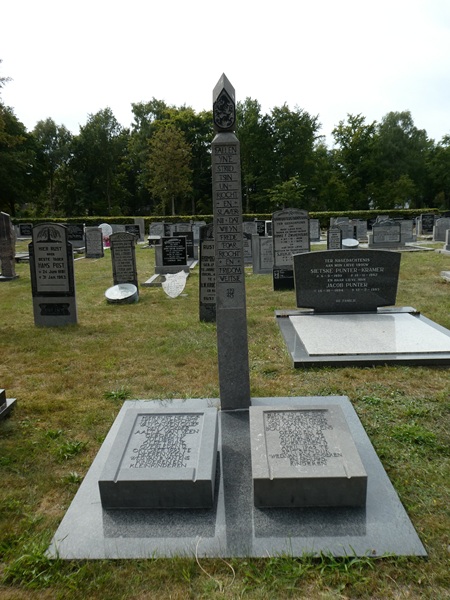Ens, van, Bouwe M.
- Date of birth:
- March 23rd, 1893 (Slijkenburg)
- Date of death:
- April 13th, 1945 (Luinjeberd/Splitsendijk)
- Nationality:
- Dutch
Biography
Lived in Nieuwehorne (Heerenveen), No. 103. Son of Meine van Ens and Wobbegje Pijlman. Married to Aaltje van der Veen (six children). Cattle farmer. Dutch Reformed. Member of the resistance belonging to the LO-Nijehorne and the Binnenlandse Strijdkrachten Nieuwehorne (Newhorne Internal Armed Forces). Van Ens was closely involved in the four weapons drops in the Katlijker Schar. The weapons were initially stored at the home of cattle farmer Lykle Mulder, who lived close to the drop zone. The following night, they were transported by horse and cart to Van Ens and cattle farmer Jelle Boersma, among others, after which they were quickly distributed further. After the arrest of Luitjen Mulder, Wiepke Hof and Roelof Knol, a fifth drop was cancelled, but the damage had already been done, as the names of many of those involved in the weapons drops had become known to the Germans. This led, among other things, to the arrest of Boersma, who was shot dead with nine others in Doniaga on 17 March 1945. Van Ens also came under suspicion. Even when a German car stopped in front of his farm and drove away again, he did not go into hiding. After his arrest, he refused to name names at the SD stronghold Crackstate in Heerenveen, despite horrific abuse. Together with Sijberen Sijtsma (3 November 1896, Wommels), he was shot shortly before liberation. His remains were found in a ditch. According to Pieter Wijbenga, prisoners who survived their stay in Crackstate later agreed that those who had been most severely abused had been eliminated. The commander of the Heerenveen SD, the Austrian Erich Karl Kronberger, who was sentenced to fourteen years in 1950, stated during his trial that he had only selected the most serious cases when he was ordered to execute six prisoners in retaliation for the death of Germans at Scharsterbrug. Wijbenga: “Whether he thought this up afterwards or not, it could be true.” Public prosecutor Rudolf Gerard Nubé certainly did not share that view at the time: 'Van Ens and Sijtsma were shot in retaliation for the firefight at Scharsterbrug, according to the defendant. Six Germans were shot there. In contrast, only two Dutchmen were shot? That's too good to be true! This was not retaliation, but simply senseless. I believe that these were broken witnesses who had to be eliminated. After all, important illegal workers were in their hands at the time. The element of deterrence is missing here, because it happened at night, and that is the essence of retaliation. The torch of the Friesland 1940-1945 Foundation stands on Van Ens' grave. His name is mentioned on the war memorial on Van Maasdijkstraat in Heerenveen, while a street in this town is also named after him.
Do you have more information about this person? Inform us!
Sources
- Photo 1: Herma de Vries
- Pieter Wijbenga, Bezettingstijd in Friesland; rechtbankverslag De Heerenveensche koerier, 8 februari 1950



